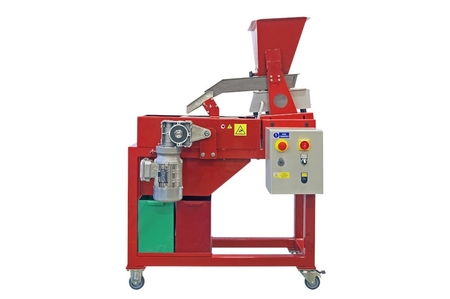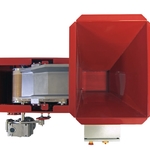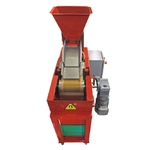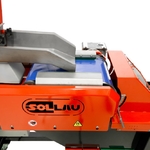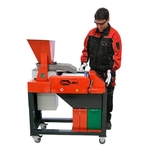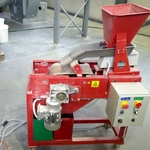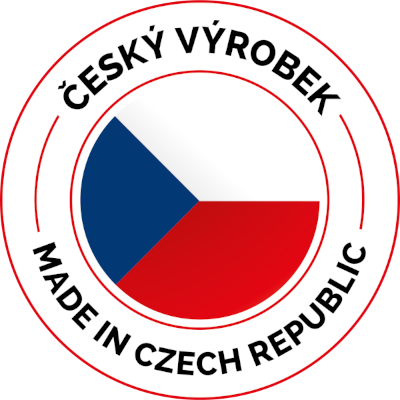LSV Laboratory high intensity magnetic separator
LThe laboratory dry high intensity magnetic separator LSV is – from the functional point of view – very similar to VMSV high intensity rare earth roll separator. However, LSV is mainly used in laboratory and test conditions for separation of very small magnetic and paramagnetic particles ((from 1 micron already, incl. stainless steel or some paramagnetic minerals) from fine bulk materials.
Design of the laboratory rare earth roll separator LSV
This separator is fit with a vibrating feeder and a pair of rolls. One roll is a driving one (with a magnetic core) and the other, non-magnetic, is a driven one. The pair of rolls drives a very thin, nevertheless, a very durable conveyor belt (made of e.g. kevlar, fiberglass, a non-sticky material etc.).
The device is equipped with extremely strong magnets, but with a very short magnetic reach (of max. 10 mm). Therefore, the basic conditions for the separation of very small, weakly magnetic or paramagnetic particles include the formation of a uniform and the lowest material layer possible on the separator belt. If feasible, the layer height should not exceed the maximum material size and it should be a monolayer. That is why it is recommended that the height of the material transported on the belt does not exceed 5 mm and if the client wants to achieve the maximum possible efficiency, we recommend that the material height of the layer is up to 2 mm.
If there are applied extremely thin conveyor belts (e. g., from kevlar or glass-teflon), the maximum size of material fraction should not exceed 5 mm (larger particles could damage these special conveyor belts). There could be used (in case of coarser of more abrasive materials) reinforced conveyor belts, however, the application of thicker belts reduces the separation efficiency (as due to the belt thickness the ferromagnetic particles may get out of reach of the magnetic field of the roll).
Operation mode
The material loosened by the vibratory feeder falls down onto the conveyor belt of the magnetic separator. As the material moves into the separation zone of the magnetic head pulley, magnetically-susceptible particles are attracted towards the high intensity magnetic poles. The trajectory of the particles affected by the high-strength magnetic field is altered and these particles are carried outside the magnetic field of the magnetic roll and fall into a container for ferromagnetic particles. The non-magnetic material continues to flow in a normal trajectory and falls spontaneously off (by gravitation) into a container for clean material.
With a carefully positioned splitter, the two fractions – magnetically susceptible minerals and non-magnetics – are separated from each other. The splitter position is angularly and axially adjustable (again according to the client’s needs and the properties of the cleaned material), and that is why in some applications it is possible to create a third (so called ‘middlings’) fraction consisting of weakly magnetic particles.
If needed, the separation process can be repeated, as all separated material fractions (Fe particles, pure material and the middlings) are stored separately in containers under the conveyor belt.
The high intensity rolls with radial-field magnets (LSV, MV-R, VMSV, VMSV EKO) are extremely strong magnetic separators. Therefore, they can e. g. separate even pieces of plastic, rubber, stones or wood contaminated with mere iron oxides.
The filling hopper, whose dimensions correspond with the width of the conveyor belt, is an integral part of the vibratory feeder. The optimal material dosing on the separator belt is performed by a vibration controller. The LSV magnetic roll is delivered with a special device for an easy and quick adjustment of the optimal conveyor belt tension. The drive roll motor is equipped with a variable speed unit in order to set the speed of the conveyor belt (according to the characteristics of the tested material and the ferromagnetic particles to be separated).
The laboratory high induction magnetic roller is used to capture especially extremely fine magnetic particles. In case of using of extremely thin conveyor belts from kevlar or glass-teflon, the maximum size of material fraction should not exceed 5 mm (larger particles could damage these special conveyor belts). There could be used (in case of coarser of more abrasive materials) reinforced conveyor belts, however, the application of thicker belts reduces the separation efficiency (as due to the belt thickness the ferromagnetic particles may get out of reach of the magnetic field of the roll).

